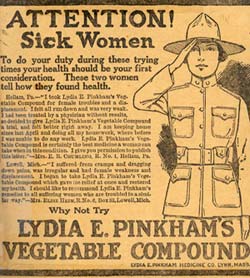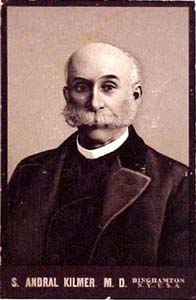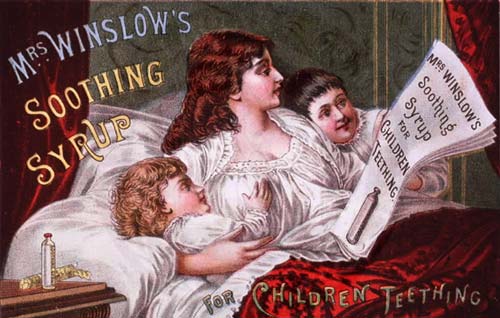 Patent Medicine is a term used to refer to concoctions popular in the 18th and 19th century which were advertised to cure almost every disease. Patent Medicine is actually an incorrect name though. Most of these products were trademarked but never patented. The process of patenting a product requires full disclosure of a medicine’s ingredients. Most manufacturers did not want to reveal the toxic or questionable ingredients of their so-called cures.
Patent Medicine is a term used to refer to concoctions popular in the 18th and 19th century which were advertised to cure almost every disease. Patent Medicine is actually an incorrect name though. Most of these products were trademarked but never patented. The process of patenting a product requires full disclosure of a medicine’s ingredients. Most manufacturers did not want to reveal the toxic or questionable ingredients of their so-called cures.
Patent Medicines were mostly very similar in their preparation containing various vegetable extracts, generous amounts of alcohol and often narcotic such as morphine, opium, or cocaine. These drug compounds could be deadly and were often more hazardous then helpful. At the time, there were no regulations in regards to the ingredients of these medicines. Claims made by manufactures of Patent Medicines included the ability to cure everything from caner to tuberculosis to paralysis.
A very popular medicine of the late1800s was Lydia Pinkham’s Vegetable Compound. About 1865, Lydia Pinkham was brewing batches of a brown, bitter-tasting mixture of roots, herbs and 18% alcohol in her kitchen. Pinkham’s ads claimed that her compound would cure “all those painful Complaints and Weaknesses so common to our best female population.” Pinkham began selling the medicine in 1875. When she died in 1883, she was selling more than $300,000 worth of product each year. Versions of her formula were sold under her name for more than 100 year.
 Dr. Kilmer’s Swamp-Root was another popular patent medicine. Created in the early 1880s by Dr. S. Andral Kilmer this medicine claimed to cure malaria, swamp fever and all other swamp related diseases. It was also said to be an effective treatment for prostate and other urinary infections. The product was a huge success. After a fire destroyed the original factory in 1882, a new plant was built in Binghamton New York that could fill over 2000 bottles of medicine a day.
Dr. Kilmer’s Swamp-Root was another popular patent medicine. Created in the early 1880s by Dr. S. Andral Kilmer this medicine claimed to cure malaria, swamp fever and all other swamp related diseases. It was also said to be an effective treatment for prostate and other urinary infections. The product was a huge success. After a fire destroyed the original factory in 1882, a new plant was built in Binghamton New York that could fill over 2000 bottles of medicine a day.
Originating in New York in the 1840s, Mrs. Winslow’s Soothing Syrup was a patent medicine marketed for mothers. It claimed to soothe the pain of teething and quiet restless infants and children. The one grain of morphine found in every fluid ounce of the product was extremely effective but also very dangerous. As the American Medical Times said in 1860, many mothers were “relieved of all further care of their infants” after giving them a dose of Mrs. Winslow’s Soothing Syrup.
These and many other patent medicines were very popular until journalists and other investigators began to write about the hazards of these concoctions including death and drug addiction. An expose written by Samuel Hopkins Adams entitled “The Great American Fraud” led to the eventual passage of the Pure Food and Drug Act which required manufactures to disclose the contents of their products including alcohol and narcotics. It was, also, an attempt to stop the outrageous claims made by the manufactures of these products. In 1938, a revision to the food and drug act banned the sale of narcotics. The era of Patent Medicines came to an end.

